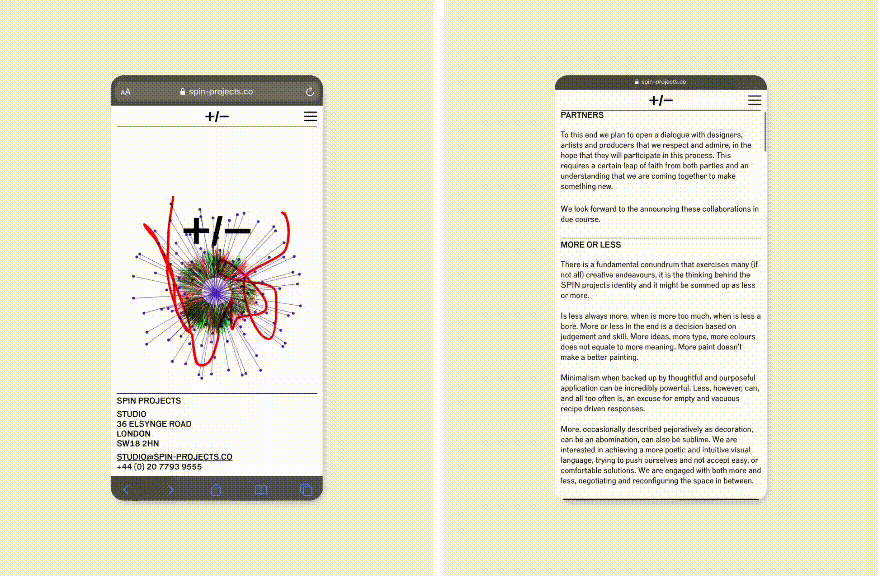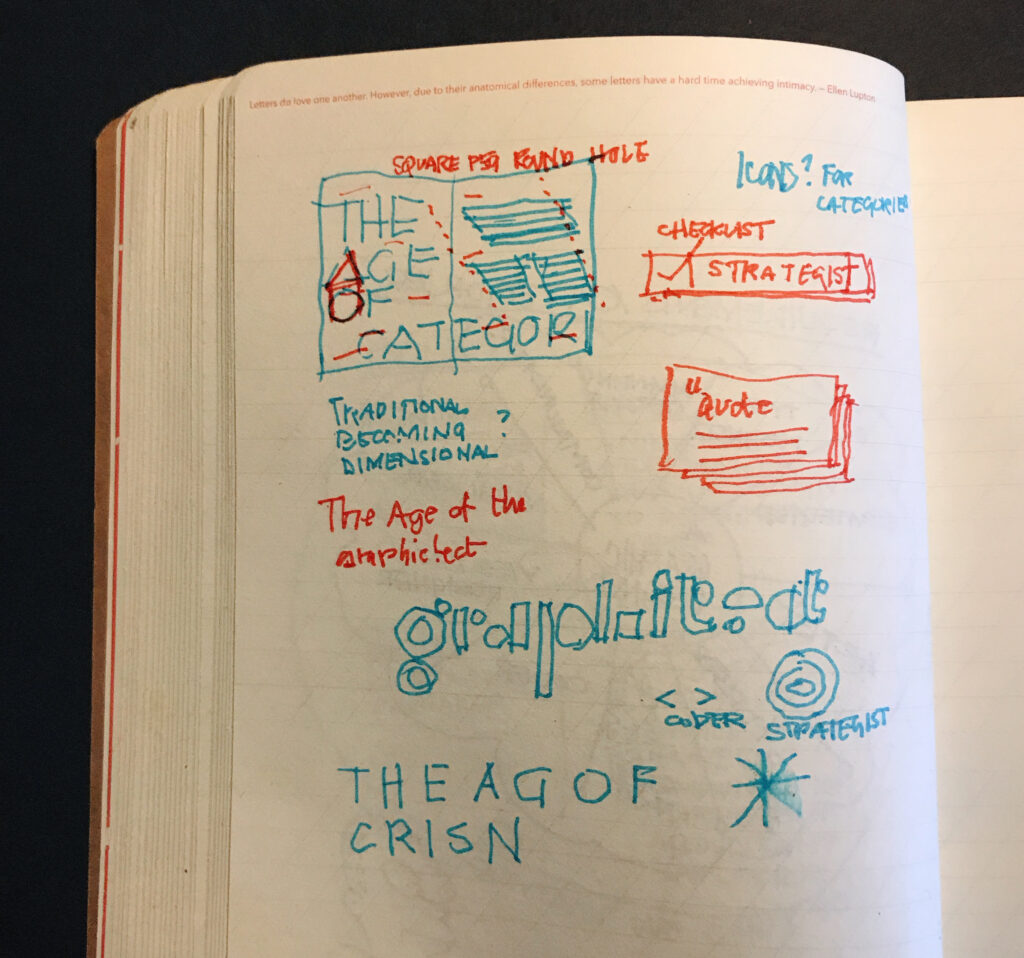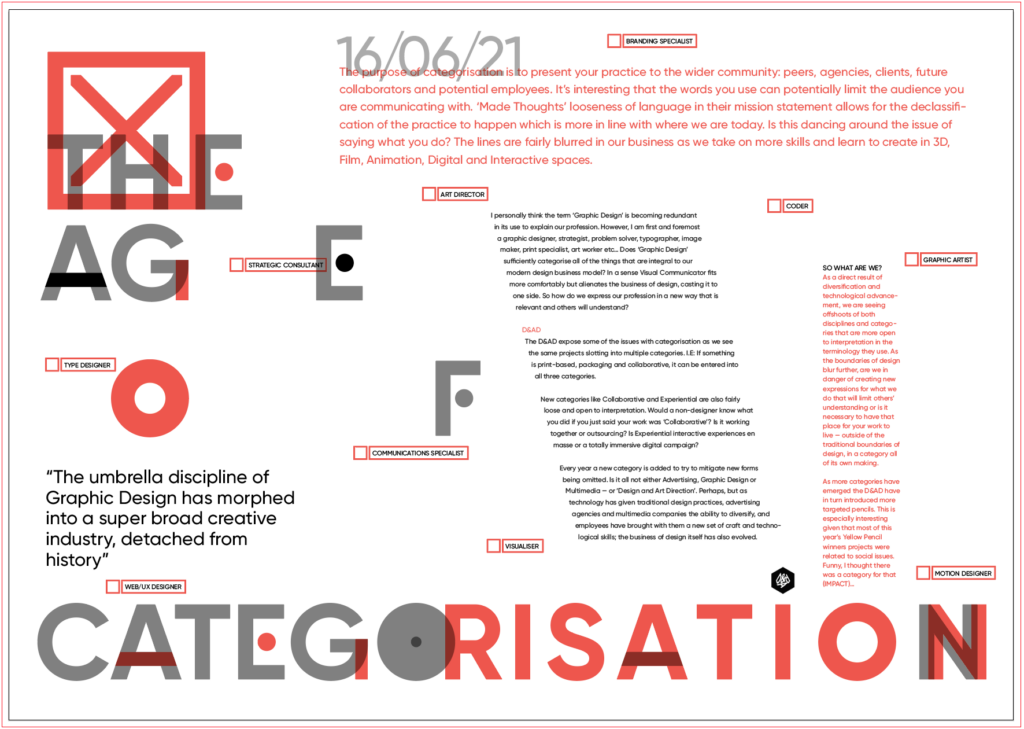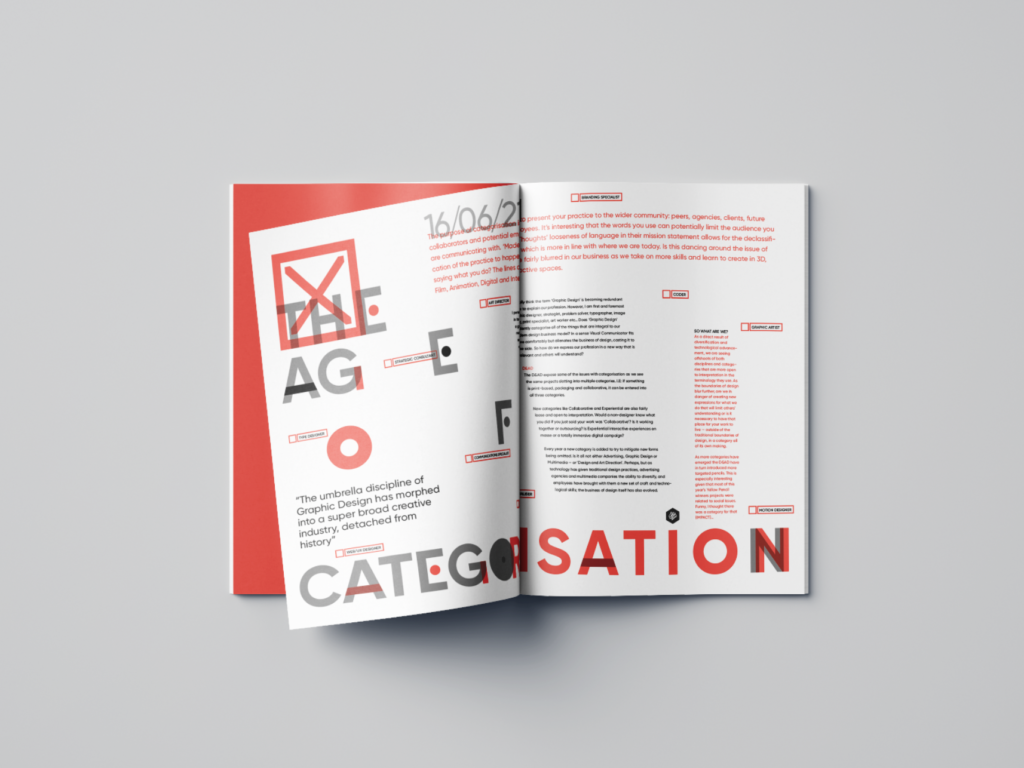REFLECTIONS ON LECTURES 1 & 2/REFERENCE MATERIALS:
How has globalisation affected your practice/graphic design over time?
When I think of the idea of Globalisation I think of a Distopian vision of the high street in the world turning into one big homogenised shopping mall. There is another side to this: Uniting designers, cultures and embracing real community. The pandemic has proven that working from home in the interconnected space works. I think this shift will continue and it is hard for employers to go back to an older model of working. Which leads us to…
— Collaborative practice: Enables us to use people with different skillsets both locally and abroad. Outsourcing.
— New learnings: Cultural differences, social and political landscapes. How is the work affected - location/political landscape.
— Profile: Increased profile beyond social media platforms through collaboration and interaction/meetings. Residencies.
— Technology: Enabled to connect to the world. Agree with Sam Winston that face to face for the important stuff is still best…
"What you see on screen is not what you see on paper"
Sam Winston
—
I think the only real negative side of working this way is managing different time zones and languages, and in the time of a pandemic actually being able to meet face to face. The other negative is some larger, corporate clients have homogenised their brand offerings, particularly companies like Vodafone; and have not in the past taken into consideration the cultural differences. Black Lives Matter, MeToo, LGBT+, Disabilty and Extinction Rebellion/Greta Thunberg have all forced brands to rethink, so a shift towards less alienation is starting to happen. Globalisation can also mean gentrification where the smaller businesses get hoovered up and 'disappeared'. In my own practice it's important that the 'local' and 'community' is not forgotten in a brand centric world. It's also important that we don't lose sight of the actual planet either which is particularly close to my heart and ethos.
TAKE OUTS
— Outsource what you can't do yourself and think is there anyone who can do this better worldwide.
— Make connections worldwide.
— Collaborate at every opportunity.
— Gain an understanding of the culture you are working within. What truth is important to tell? local vs global.
— Does the language of the design work in the culture you are working for?
— Is the brand honest. Can communities be created around the brand? Gain individuals as ambassadors?
— Think sustainably. How future thinking is the brand you are working for?
—
IDEAS WALL
Asked the ideas wall community for their own insights/take outs on this:
Tove makes some interesting points. While I agree that capitalism has enabled emerging countries to grow significantly in prosperity and effects on those countries has been a massive positive, I just have my own concerns that culture and the independent can get hoovered up in the process of homogenisation. Isn't the reason to travel the to explore another country the little differences? I am also not sure that lower income groups would necessarily agree that there are no aftershocks when this happens. Having said that, in terms of business practice and global networking/friendships/partnerships it can only be a positive force.

NON FORMAT
Constant desire to break apart the process. Not standing still for too long. Pushing type to its absolute limitations. Also applies to the format where possible. Latter work reminds me of Philipe Halsmann and Nick Knights Photography. SPIN studio also have this constant searching process.
TAKE OUTS
— Don't settle for off the shelf processes where you can drwa/create something uniquely.
— Integrate the technology to add dimension...
— Type doesn't have to be one-dimensional
Interesting re: my previous point on time zones being a potential issue whereby Non-Format embrace this as part of their collaborative working process.

10 DIFFERENT TYPE OF PRACTICE TODAY
CATEGORISATION IN PRACTICE

— Strategic Consultant
— Type Designer
— Branding Specialist
— Communications Specialist
— Visualiser
— Web/UX Designer
— Coder
— Motion Designer
— Art Director
— Graphic Artist
TAKE OUTS
— There is no one term that will cover everything. Look for the essentials to describe what it is you do.\
—
BLURRING THE BOUNDARIES IN PRACTICE:
SPIN / LONDON
Spin categorise themselves in a humble, understated way as graphic designers first and foremost, with terminology firmly focused on change and the future of design. Words like flux, thought provoking, memorable, holistic, complex and rigorous are used to describe their process and their detail orientated design is all of these and more. They have created a culture of exploratory design thinking that feeds back into their client work keeping it fresh and engaging. With their confident, surprising solutions across a wide range of media they have managed to position themselves somewhere between design and art, whilst at the same time graphic designers.

TAKE OUTS
— Use words that best. describe your contemporary practice
— Be open to new ideas, experiments and ways of thinking
— Don't just focus on the day to day — keep exploring new avenues and experimenting
—
NEW TERM TO DEFINE OUR PROFESSION (BRAINSTORM)
Based around Strategy, Technology and Design.
— Expansive Communication
— Immersive Communications
— Universal Design Practice
— Integrated Design
— Integrated Graphic Design
— Visual Optics
— Dengineer
— Graphic Interactor
— Graphic Interactions
— Graphic Disruptor
— Graphic Iconoclast
— Imagineer (Doh, Disney...)
— Emersivicator
— Multi-Grapher
— Multographer
— Versographic
— Fluxographic
— Multi-Faceted Design
— Interconnected Design
— Design Correlation
— Total Design (I know, Wim Crouwel et al...)
— Design Convergency
— Designification
— Graphic Integration
— Univirtousity
— Demergent
— Technographologist
— Graphitect
— Graphotect
— Graphotechnologist
— Graphigist
— Polygraph (shite... lie detectors....)
— Divergent
— Gestaltographic
TAKE OUTS
— Avoid pretension and confusion
— Be authentic
—
IDEAS WALL
James point about interaction and versatility to work across multiple areas is a strong argument although I am not so sure designers themselves would be comfortable calling themselves Versographic Designers.
It's hard to know what is right for such a breadth of experience and skill but I have settled on Graphitect. or Graphitectural Design.
Architects are respected for their knowledge, education and polymathic ability to design not just the spaces but all the things that go in them as well.
I want a term that garners respect from the industry but also alludes to our strategic, technical and creative abilities. I also think this works when describing SPIN's work as they create visual virtual and real spaces for you to inhabit and explore.


—
WORKSHOP CHALLENGE: WRITTEN TASK
Explore the categories of the D&AD award winners 2020 and consider how this impacts on your views of design terminology, consider the overlaps and points of change, difference and similarity. (500 words).
CATEGORISATION
The purpose of categorisation is to present your practice to the wider community: peers, agencies, clients, future collaborators and potential employees. It’s interesting that the words you use can potentially limit the audience you are communicating with. ‘Made Thoughts’ looseness of language in their mission statement allows for the declassification of the practice to happen which is more in line with where we are today. Is this dancing around the issue of saying what you do? The lines are fairly blurred in our business as we take on more skills and learn to create in 3D, Film, Animation, Digital and Interactive spaces. I personally think the term ‘Graphic Design’ is becoming redundant in its use to explain our profession. However, I am first and foremost a graphic designer, strategist, problem solver, typographer, image maker, print specialist, art worker etc… Does ‘Graphic Design’ sufficiently categorise all of the things that are integral to our modern design business model? In a sense Visual Communicator fits more comfortably but alienates the business of design, casting it to one side. So how do we express our profession in a new way that is relevant and others will understand?
D&AD
The D&AD expose some of the issues with categorisation as we see the same projects slotting into multiple categories. I.E: If something is print-based, packaging and collaborative, it can be entered into all three categories.
New categories like Collaborative and Experiential are also fairly loose and open to interpretation. Would a non-designer know what you did if you just said your work was ‘Collaborative’? Is it working together or outsourcing? Is Experiential interactive experiences en masse or a totally immersive digital campaign?
Every year a new category is added to try to mitigate new forms being omitted. Is it all not either Advertising, Graphic Design or Multimedia — or ‘Design and Art Direction’. Perhaps, but as technology has given traditional design practices, advertising agencies and multimedia companies the ability to diversify, and employees have brought with them a new set of craft and technological skills; the business of design itself has also evolved.
SO WHAT ARE WE?
“The umbrella discipline of graphic design has morphed into a super broad creative industry, detached from history”.*
Henry Wong
—
As a direct result of diversification and technological advancement, we are seeing offshoots of both disciplines and categories that are more open to interpretation in the terminology they use. As the boundaries of design blur further, are we in danger of creating new expressions for what we do that will limit others' understanding or is it necessary to have that place for your work to live — outside of the traditional boundaries of design, in a category all of its own making.
As more categories have emerged the D&AD have in turn introduced more targeted pencils. This is especially interesting given that most of this year's Yellow Pencil winners projects were related to social issues. Funny, I thought there was a category for that (IMPACT)…
*Design Week/Design in 2021 – What will graphic design look like? By Henry Wong (January 4, 2021).
TAKE OUTS
— Don't confuse your audience by coming up with new terms to design what is essentially Graphic Design and Communication
— Be Succinct
— Be careful about the language you use to prevent alienating potential collaborators/clients
— Look for forward thinking language to describe you practice
—
WORKSHOP CHALLENGE/STUDIO PRACTICE
EDITORIAL LAYOUT
Like the idea of pulling apart all the rules so have this idea of creating a layout that is itself uncategorizeable: No grid, no sense for placement of text over folds, busy and layered, hard to read and complex.

VISUAL REFERENCE

PROPOSED LAYOUT (FOR DEVELOPMENT)

PROPOSED LAYOUT SPREAD TEST

—
FINAL EXECUTION

Bottled it. The layout was too confusing across the spreads so I have paired back a few of the details to make it easier to read.
TAKE OUTS
— Push further in your iteration process and experimentation
— Resist the desire to over tidy/design in the experimentation process. You can always pull back once you have found the surprising element
— Reassess your typeface use/modernise. Stop looking back — look forward
